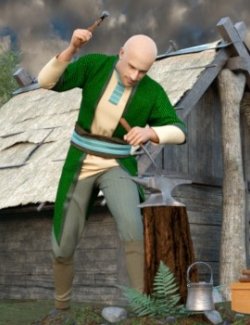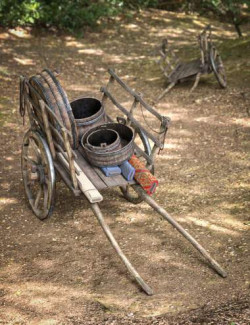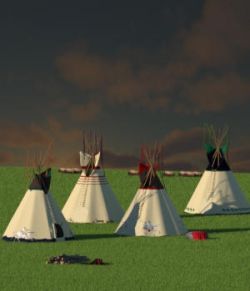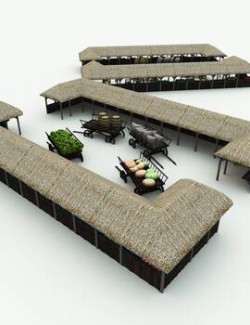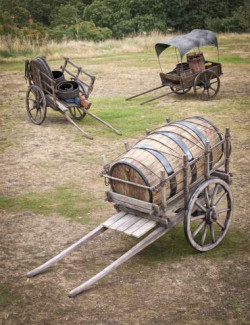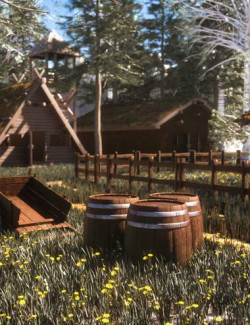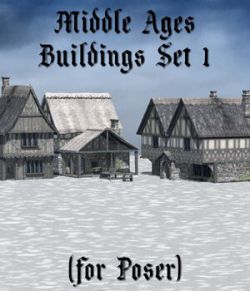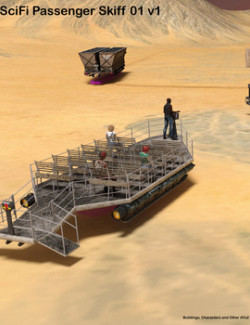Perhaps you have some great Medieval buildings and want to create a new scene for the Fall season. You would like some interesting characters, in addition to your own.
Here are two high resolution figures of the Medieval Tinker and all his tools and trading goods to help.
The “Tinker” was an important figure in the Medieval Era. Tinkers were relatively rare, itinerant skilled craftsman who traveled from village to village, repairing items, selling and trading hard-to-obtain goods. These goods included sewing needles, fine cloth and thread, medicines, spices, fine metal wire and jewelry. Tinkers possessed considerably more technical and scientific knowledge than most people in the countryside. In addition to blacksmithing and general engineering, they provided medical services using herbs, ointments and potions. They were commonly thought to have magical abilities, although this reputation was most likely due to their significantly higher education level. Traditionally, Tinkers, although pedestrian walkers with hand carts, generally were safe from attack by robbers or physical abuse in their travels. To harm a tinker meant that no other tinker would offer vital services to that area in the future.
This Tinker set presents a high resolution Tinker character and his traditional walking cart in two different static poses, along with a rich array of historically accurate tools and trade goods. (This package contains more than 70 high resolution objects that can be arranged as you wish.)
The first part of the package focuses on the Tinker making repairs to a pair of metal scissors. The scissors, anvil, specialized metal-working hammers, pliers, chisels and fids in this package are accurate reproductions of Medieval-era tools. These tools and the small anvil, along with various spools of copper and brass wire types were carried in wooden boxes in the hand cart. This set includes a metal pot (historically accurate) that the Tinker has just finished repairing near the base of the tree stump holding the anvil. (This set also includes a piece of ground with tree stump, rocks and plants that can be merged into an outdoor scene in a farmyard or village center.)
The second set of items focuses on the Tinker character displaying his medicinal items and trade goods. You can places the old wooden table with his trade items in a village center. The Tinker's items here include small wooden containers of salves and ointments, a mortar and pestle, a sheaf of thyme leaves, small glass bottles of potions, and larger bottles of medicines in a wooden box. Some small bolts of silk and flannel cloth are on the table, and in a burlap bag at the side of the table. These include more finely woven types of cloth that would be not likely to be produced in rural villages. Another important trade good, irreplaceable by village blacksmiths would have been the steel needles and spools of thread that are on the table. Finally, the table holds a small bag of different kinds of worn gold rings and gemstones (spilled out of the small bag) that the Tinker is probably took in trade for his services. He would have traded these to other people along his route, and have used them to pay for his lodging in inns or farmsteads along the way.
.
The two Tinker figures here and all the individual objects are high resolution objects in *.obj file format. They can be positioned as desired or saved out and used in other scenes.
DAZ artists should not purchase this version of the Tinker #1 package. Instead, they should purchase the *.FBX 2013 version - the files in that version import immediately into DAZ with no further surface editing required.

